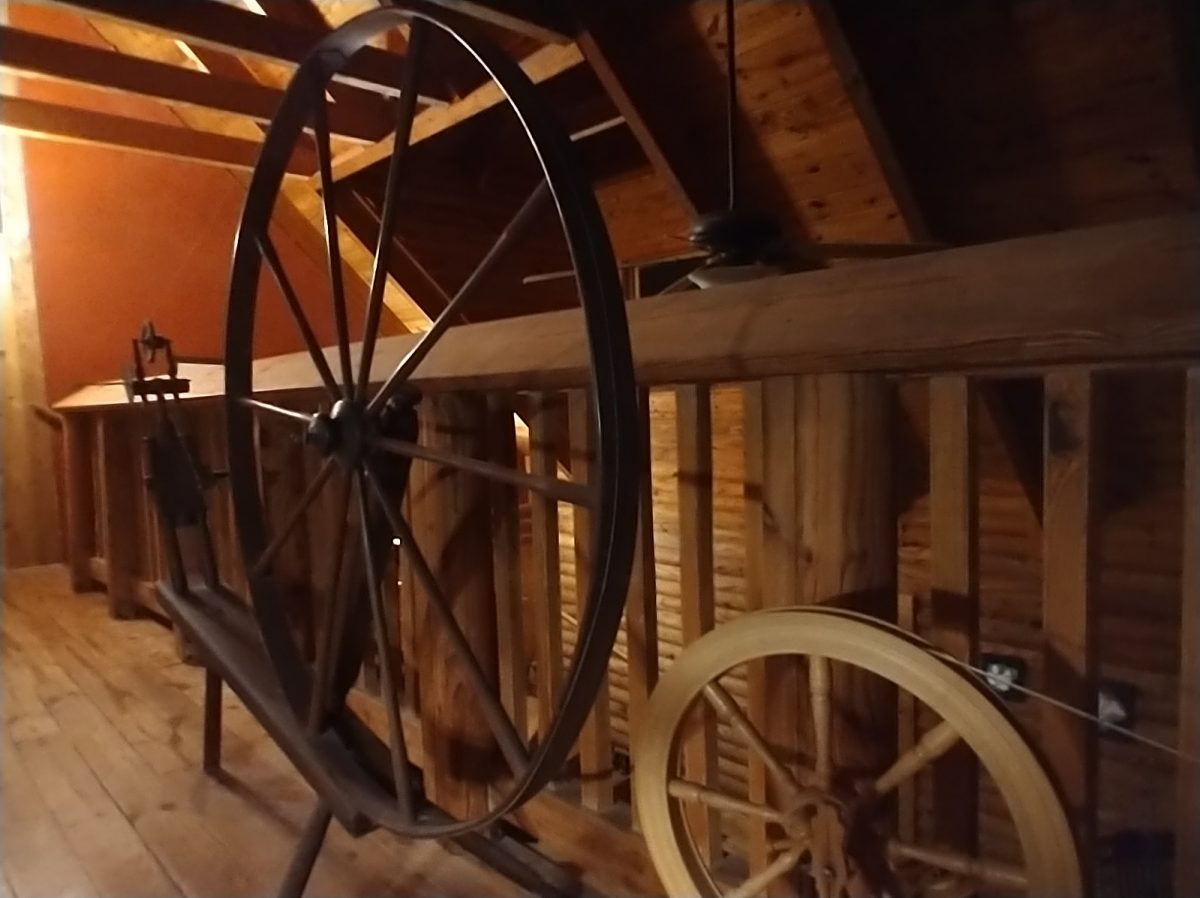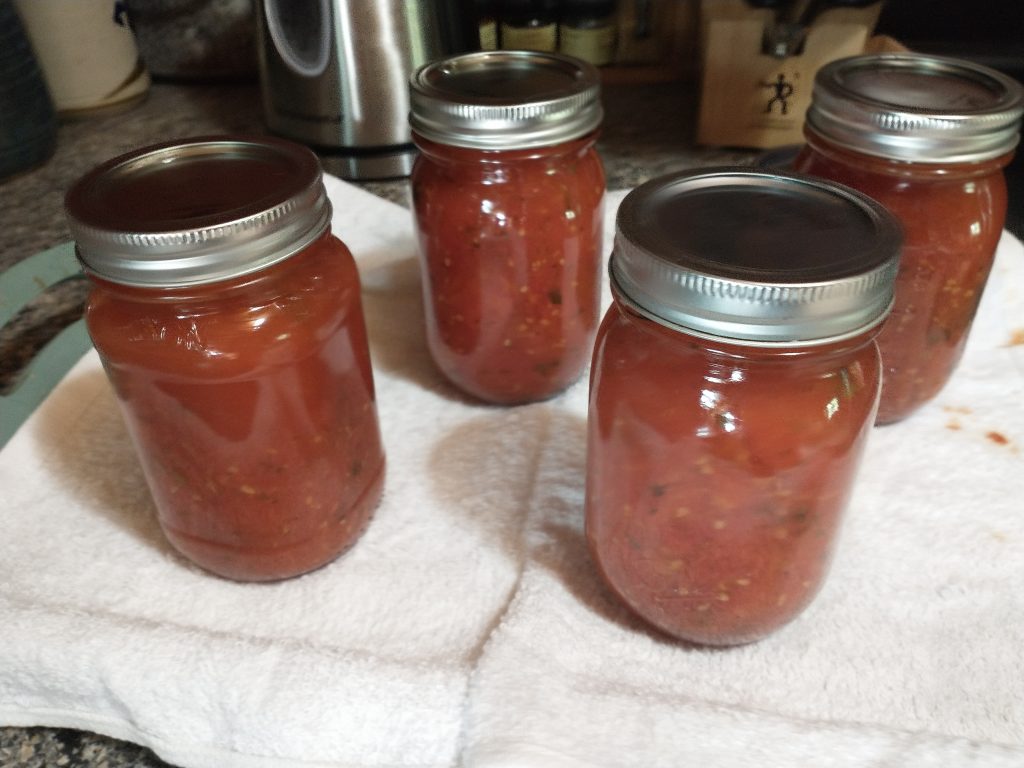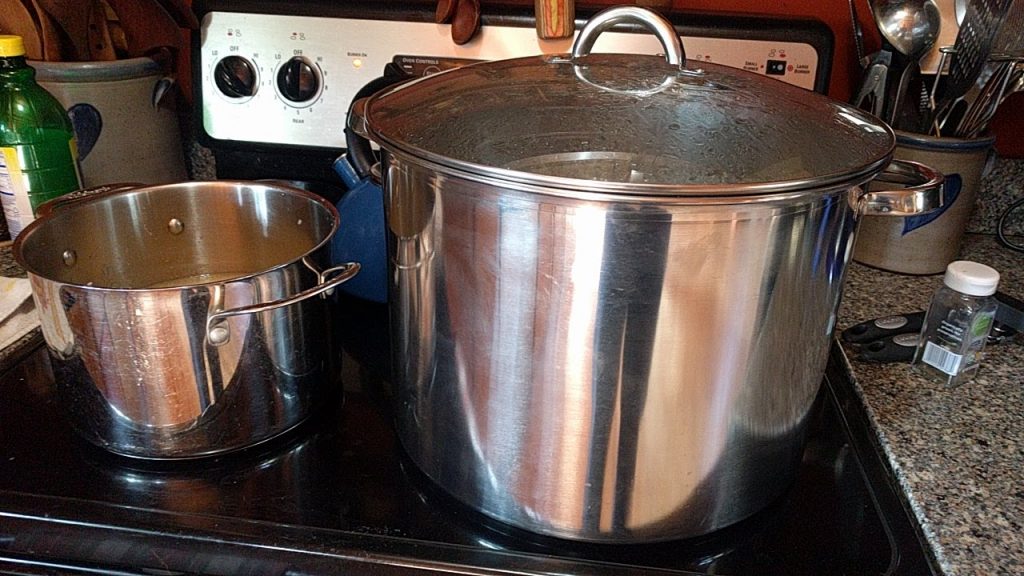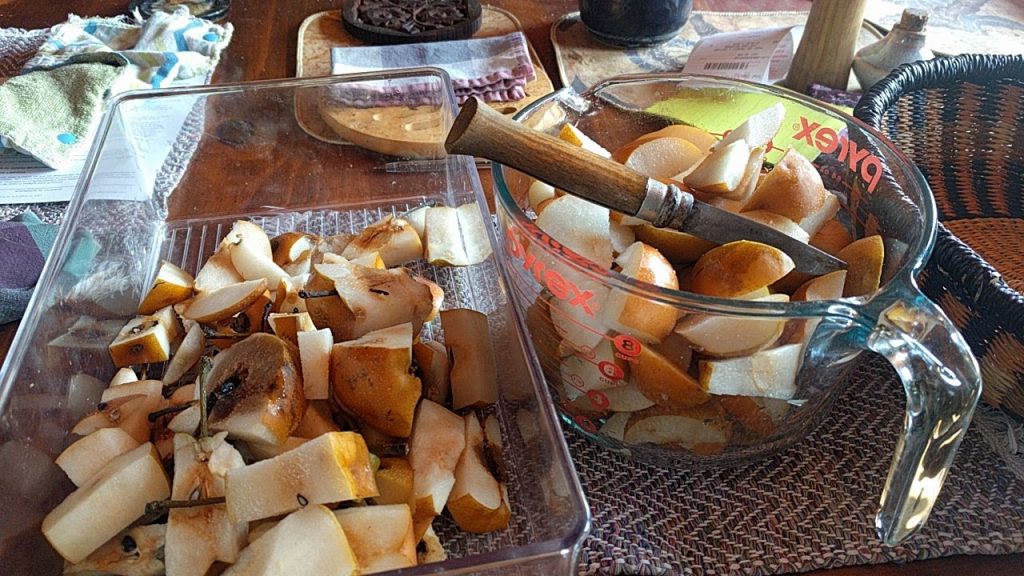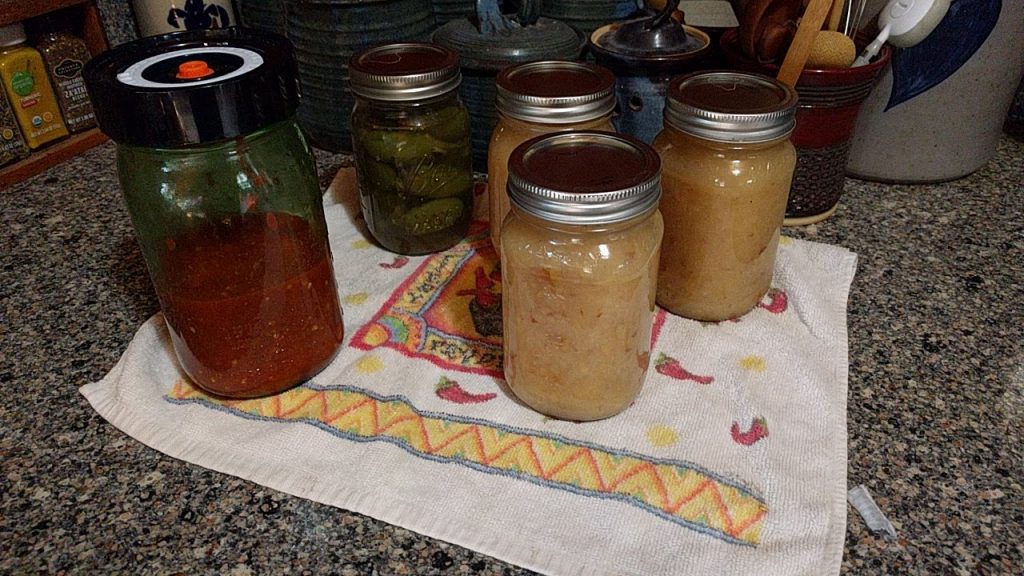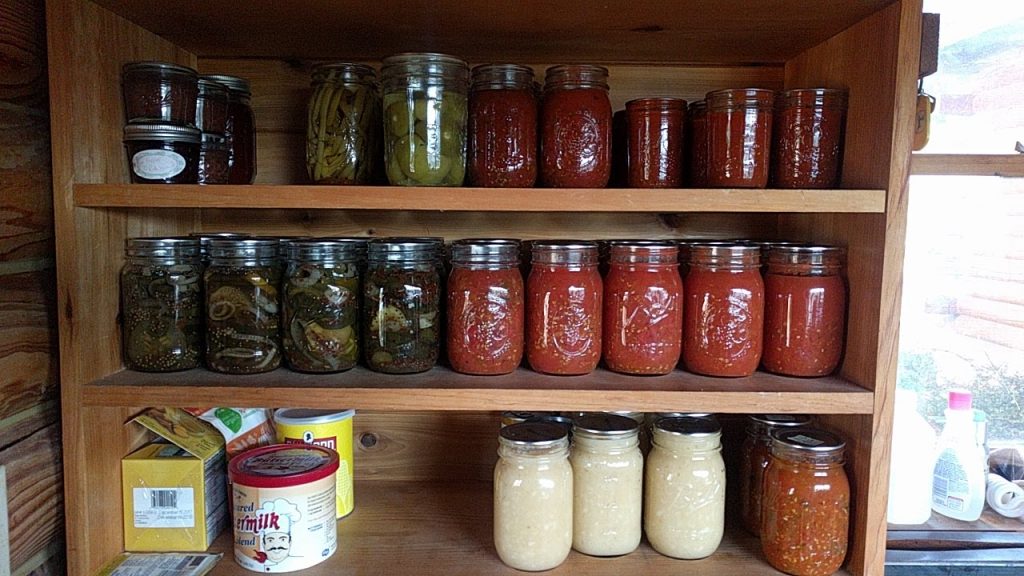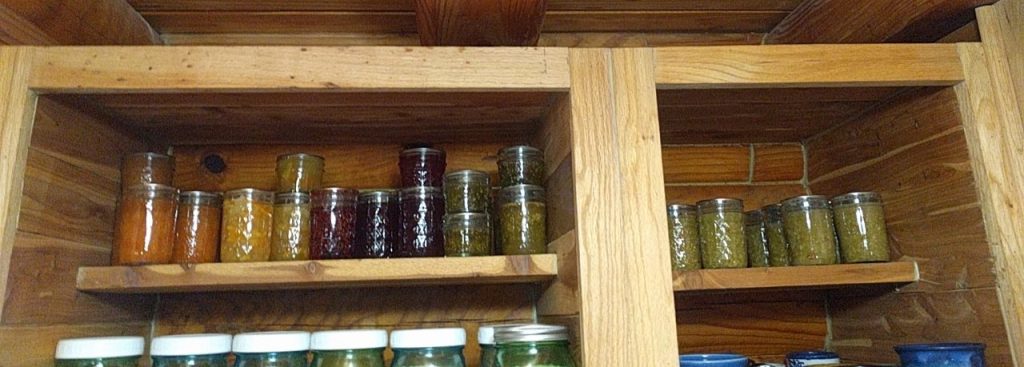In the fall of 2023, our 12 year old English Mastiff named Ranger crossed the Rainbow Bridge. He was the best boy and his loss was very difficult for both hubby and me. We decided to memorialize him with an oak tree. The tree was a large one for a nursery tree, about 8′ tall in a 5 gallon pot. It was a challenge to get home, but accomplished by the aid of a friend and her pickup truck. The hole was dug, the tree planted and stabilizing ties added to three points. The tree turned fall colors and lost it leaves. Come spring, the tree put out new growth and we were grateful it seemed to be in good shape. Again, it lost it leaves and last winter, it began to look bent. I checked on it and about 15″ of it’s lower trunk about 3/4 of the way around, the bark had been rubbed off, I expect it was deer rubbing the velvet off of new antlers last spring and summer. I tried protecting the stem and straightening it late winter. The Ranger Tree couldn’t withstand that abuse and it died. A check yesterday, I realized it did not have any buds, and the young branches all the way up were brittle. We had selected an oak because it is a native tree. The nursery from which we had purchased it participates in “Throwing Shade Virginia,” a collaboration between the Virginia Department of Forestry and certain nurseries. If you purchased a native tree or shrub during March through May, you get a $25 discount. Today we went to see what was available and came home with a Northern Red Oak in a 2 gallon pot. It is only about 5.5′ tall, but full of new buds. Once home, the dead tree was dug out, the hole refreshed with new bagged soil and garden soil and The Ranger Tree II was planted. Not to have a repeat, the trunk was wrapped in an expanding spiral trunk wrap and a fence was erected about 3.5+ feet out from the newly planted tree.
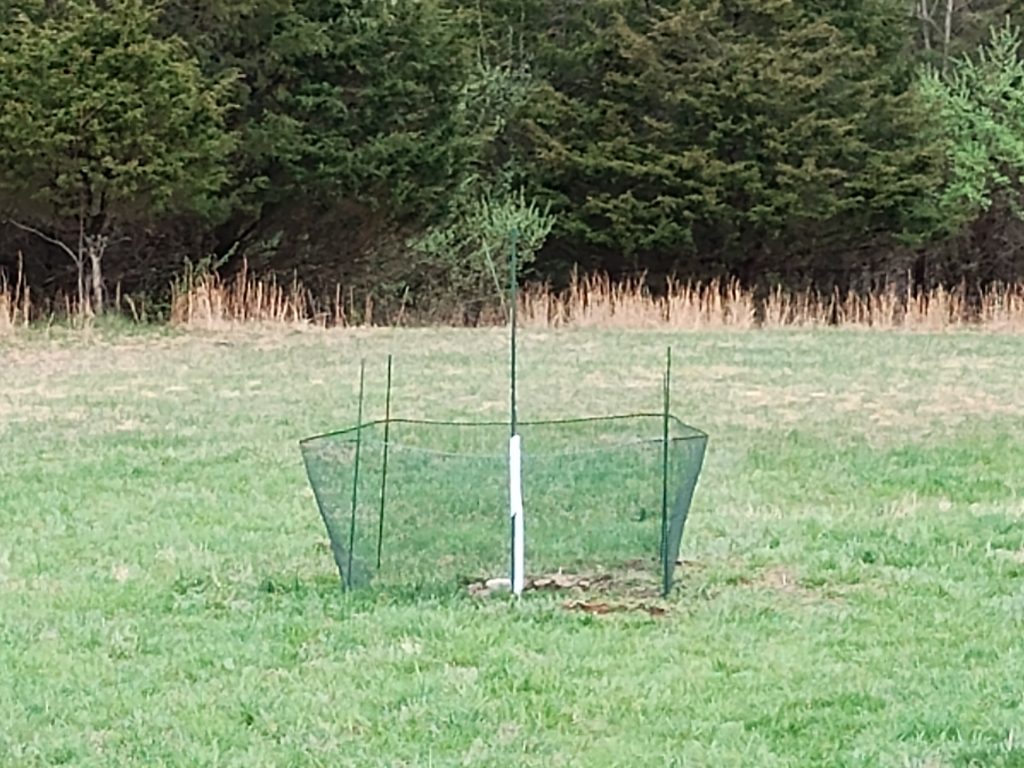
To the right of where this tree was planted are the trees showing their spring flowers and new foliage.
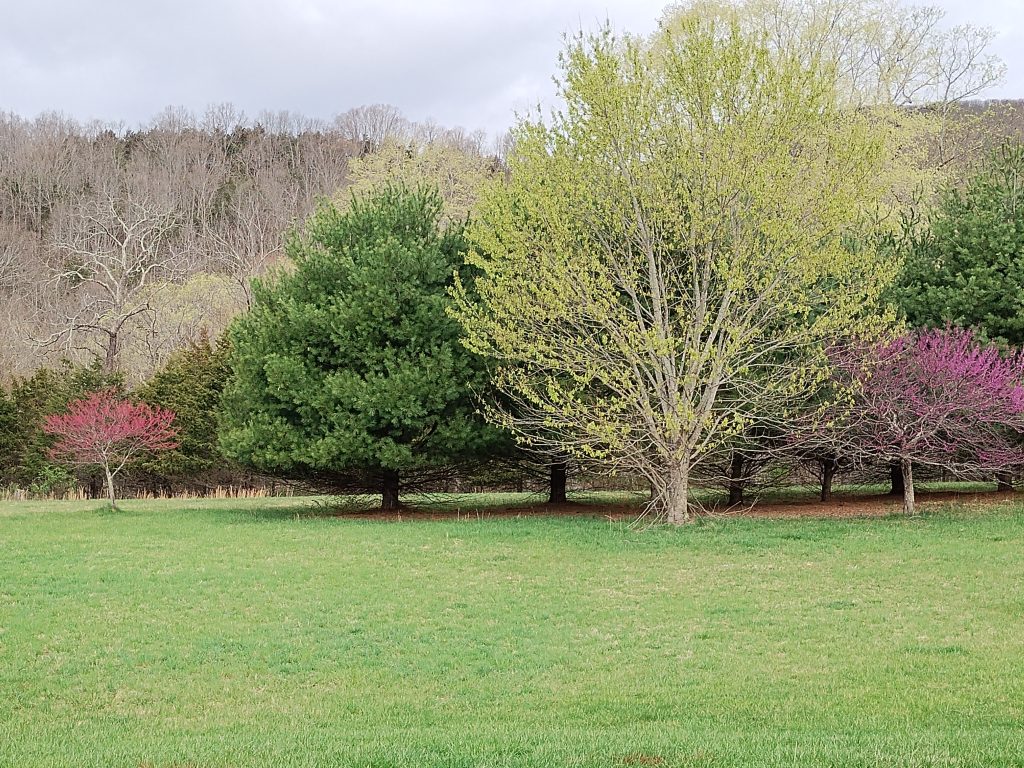
And on the other side of the yard across the driveway, the beautiful yellow of the Forsythia. And the green of the lilacs.
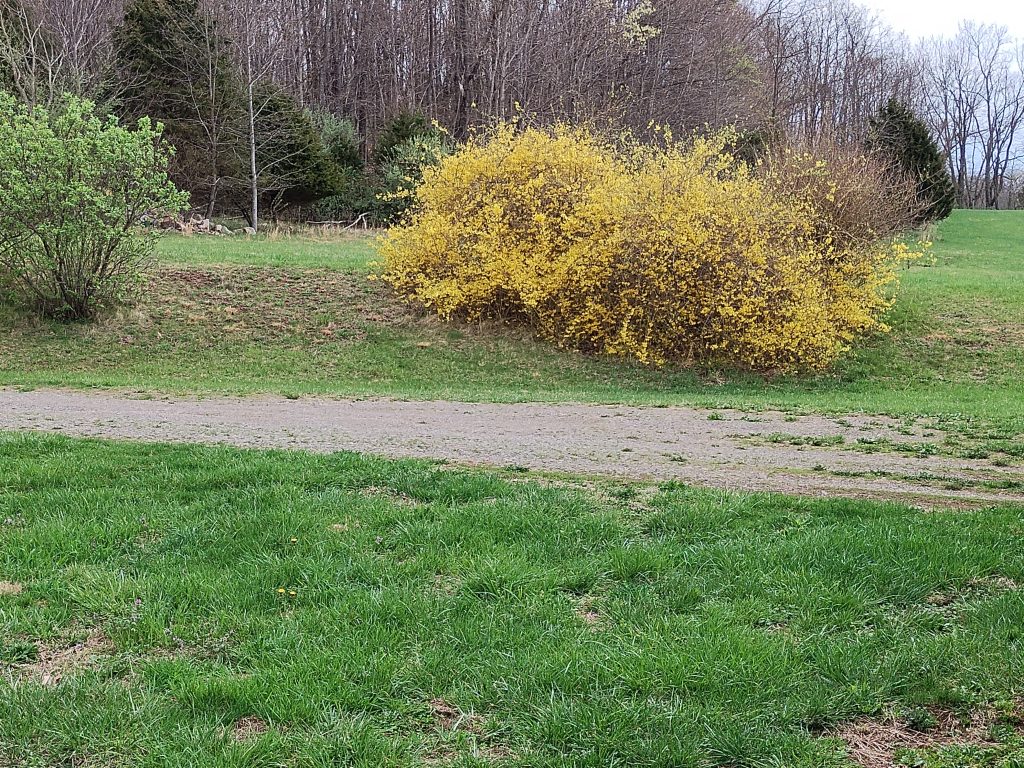
We have had some delightful warm spring days, the garden is nearly ready for the summer vegetable plantings. The fall garlic is about a foot high, the spring onions about half a foot, and the peas are up enough to see where some needed to be filled in. Yesterday, a handful of pea seed was soaked in warm water for several hours and the empty spaces filled with them. We have another near summer like day, then a flipflop in the weather going to drop us back to normal daytime temperatures in the upper 40’s to mid 50’s, but Tuesday night it going down to the mid 20’s. The plum tree has bloomed and the blossoms are done. The peach trees are just coming into their own and the Asian Pears might be near the end of bloom. The apple trees haven’t bloomed yet. I hope it doesn’t kill the chance of getting fruit this summer and fall. The fig hasn’t come out yet.
An afternoon home alone yesterday allowed me to prune back the dead flower stalks from plants that leave a semi woody stem at the end of the season. They are always left in place for the insects to overwinter.
Two garden beds still need a bit more soil, but there is a bed that the wooden box had mostly rotted away and the soil from it will be moved to the other two beds. The upper third of the garden without raised bed boxes is going to be planted with sweet corn, pie pumpkins, and sunflowers.
The asparagus began showing up late last weekend and have been enjoyed for one meal so far. The garden won’t be quite as large this year and since I still have 1.5 gallons of pickled jalapenos, only two of them will be planted this year, the peppers to be pickled and canned. There is still a half gallon jar of dried ghost peppers, so they will be omitted this year. Maybe a couple of seranos for Sriracha sauce, and a couple of bell peppers will replace the extra jalapenos and ghost peppers.
I’m not wasting garden space on potatoes this year as the yield has been too low for the space they take up. I might try a potato tower and see how that yield is compared to in the ground.
It is wonderful to see the grass greening up, even though that means mowing weekly, and to see the garden taking shape for fresh vegetables.
Until then, we will be satisfied with what is available from Saturday’s Farmer’s Market.
